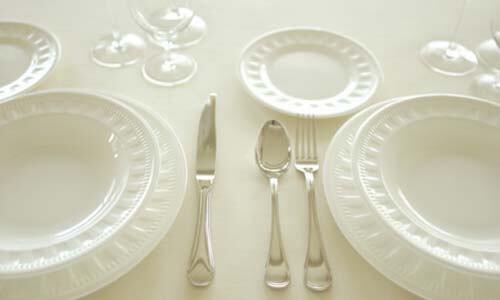Wine Basics
wine descriptions
Don’t feel compelled to use the following descriptions, although you certainly can as you gain more wine tasting experience. These are terms you will frequently encounter when discussing wine characteristics.
acidity
Acidity is the “sharpness” of a wine detected in your mouth. A wine that is too acidic may seem too sharp or harsh. One that is not acidic enough may seem dull. As a general rule, grapes grown in warm regions produce wines with lower acidity than wines from grapes grown in cooler climates.
balance
Balanced wines have a harmonious combination of acidity, flavor, texture and tannins. No one single element should stand out above the rest.
body
A wine’s body is the impact of the wine in your mouth. Wine with plenty of flavor, alcohol and tannin is a considered a full-bodied wine.
bouquet
The bouquet is the wine’s aroma.
complexity
Complex wines have a combination of richness, flavor, intensity, and balance. They are also said to have “depth”.
crispness
A crisp wine has proper acidity and taste, without excess sweetness.
delicate
Delicate wines are somewhat mild in bouquet, flavor and body.
dryness
A dry wine has very little or no sweetness; dry is the opposite of sweet. This term can also refer to the dry, puckering sensation in a drinker’s mouth caused by tannins. Residual sugar in the wine may give it a slight sweetness. These wines are described as off-dry or semi-dry.
finish
The wine’s taste immediately after it is swallowed is its finish. The aftertaste and aroma that remain after you have swallowed the wine is called its length. A long length is better than a short one.
Now that we’ve established an understanding of some of the common terms used to describe wine, let’s continue with the basics of winemaking.
winemaking
Wine is essentially the fermented juice from grapes. To create a wine, a winemaker begins by harvesting ripe grapes and transporting them to the winery. At the winery, yeast is added to the juice from these grapes. The yeast combines with the sugar in the grape juices, beginning a process called fermentation. Fermentation converts the sugars in the juice into alcohol and carbon dioxide, and also creates unique flavors and scents in the wine.
red wine
Because all wine grapes have clear juices and a greenish-colored pulp, something needs to be added to wine to give it color. To create red wines, grape skins, seeds and even grape stems may be fermented with the juices. These additional items give the wine its color and also add an ingredient called “tannins.” Tannins create additional complexity in the flavor of the wine.
The wine is then aged in oak barrels or stainless steel vats. Wines with higher tannin levels benefit from longer aging times and can continue to improve after they are bottled.
white wine
As stated before, all grapes have clear juices. Therefore, at least in theory, white wines can be made from any grape. However, white wines are usually made from specific white wine grape varieties.
Unlike red wines, white wines are fermented without grape skins or seeds, and have very little or no tannins or color. Most white wines are meant to be enjoyed after very little aging.
other types of wine
Rosé Wine
Rosé is French for “pink,” the color of rosé wines. Rosés begin life in the same manner as the reds wines, but the grape skins are removed from the fermenting process after a shorter period - usually a few hours to several days. Most rosés are sweet, but some are dry or semi-dry.
Sparkling Wine
Although they are clear like white wines, sparkling wines are actually made by blending a combination of one “white wine” and two “red wine” grapes. The proportion of each of these different grapes contributes to a sparkling wine’s unique style. Sparkling wines also undergo a second fermentation process in the bottle, which is capped so that the carbon dioxide cannot escape. This is what gives sparkling wine its bubbles.
Fortified Wine
Fortified wines, including sherries and ports, usually begin life as red wine. They are then “fortified” with alcohol. The alcohol used is usually brandy, which is made from the same grape as the wine. A “neutral”, or tasteless, alcohol may also be used.



